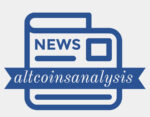
As the altcoins market continues to expand in 2025, with thousands of tokens promising innovation and high returns, the challenge for investors is no longer access — it’s discernment. Rug pulls, vaporware, and hype cycles still dominate headlines. To navigate this space successfully, knowing how to properly research altcoins is critical.
This guide breaks down a step-by-step framework to help you evaluate any altcoin project before committing your hard-earned capital.
Why Altcoins Research Is More Crucial Than Ever in 2025
In 2025, the altcoin ecosystem spans everything from real-world asset protocols to AI-powered DeFi platforms. However, not all tokens have real value or utility. Many exist solely to ride speculative waves or capitalize on meme culture.
With stricter global regulations and growing institutional participation, retail investors are under more pressure to do their own due diligence (DYOR). Thorough research isn’t just a best practice — it’s a survival skill.
Step 1: Understand the Project’s Purpose
Start by visiting the official website, whitepaper, and documentation of the project. Ask:
- What problem is the project solving?
- Is this solution technically or economically viable?
- Is blockchain actually needed for this use case?
- Who is the target user?
Projects with vague or overly generic missions (e.g., “revolutionizing finance”) should raise red flags. A clear value proposition is essential.
Step 2: Evaluate the Team Behind the Project
A project is only as good as its people. Look into:
- Founders and developers — Are they public? Do they have experience in blockchain or related industries?
- Advisors and investors — Are reputable VC firms backing the project?
- LinkedIn, GitHub, and Twitter profiles — Are they active and transparent?
An anonymous team isn’t always a dealbreaker (e.g., Bitcoin), but in most cases, public accountability increases credibility.
Step 3: Analyze the Tokenomics
Understanding the altcoin’s tokenomics helps determine whether it’s a long-term investment or a short-term speculation.
Key elements to assess:
- Total supply and circulating supply
- Inflation schedule (Are new tokens constantly being minted?)
- Token allocation (What % is held by the team, VCs, or insiders?)
- Utility — What function does the token serve in the ecosystem?
- Burn mechanics (Is supply deflationary over time?)
High insider ownership or unclear use cases are red flags. Favor tokens with fair launches, real utility, and sustainable models.
Step 4: Study Market Data
Use platforms like CoinMarketCap and CoinGecko to review:
- Market cap vs. fully diluted valuation
- Trading volume and liquidity
- Number of active trading pairs and exchanges
- Price history and volatility trends
A token might look promising on paper, but if it lacks liquidity or exchange support, it could be difficult to exit your position later.
Step 5: Review the Roadmap and Development Progress
Check the project’s roadmap and GitHub repositories (if available):
- Are they meeting development milestones?
- Is the codebase being actively maintained?
- Are they delivering on promises?
A flashy roadmap without progress is a red flag. Be wary of projects that repeatedly delay launches or fail to update their community.
Step 6: Assess Community and Social Presence
A strong, engaged community can be a powerful sign of traction — or a smokescreen of manufactured hype. Examine:
- Telegram, Discord, and Reddit activity
- Twitter and YouTube engagement
- Sentiment analysis (Is the community constructive or toxic?)
- AMA sessions or developer updates
Genuine projects typically foster educational content, Q&As, and open discussions, not just price speculation and memes.
Step 7: Look Into Partnerships and Ecosystem Activity
Check for real partnerships, not just logos on a landing page. Ask:
- Are they working with known enterprises, DAOs, or protocols?
- Are other projects building on their infrastructure?
- Have they received grants or endorsements from major blockchain platforms?
Strong ecosystem growth is often a reliable signal of real-world demand and developer interest.
Step 8: Review Regulatory and Security Risks
Especially in 2025, where crypto regulation is tightening globally:
- Has the project faced any legal challenges?
- Are their token sales compliant in your jurisdiction?
- Have they undergone security audits?
- Are they open about vulnerabilities or incidents?
Favor projects with public audit reports, bug bounty programs, and compliance transparency.
Red Flags to Avoid
- Anonymous team + no whitepaper
- Unrealistic price promises or guaranteed returns
- Poor liquidity or excessive token inflation
- No active community or development
- Overuse of buzzwords with no clear plan
If it looks too good to be true, it probably is.
Final Thoughts
In a market where thousands of altcoins are launched each year, only a few survive the hype cycle. The most successful crypto investors in 2025 aren’t the fastest traders — they’re the most informed.
By applying a methodical approach to altcoin research, you give yourself a clear edge: not just to avoid losses, but to identify the real builders shaping the future of Web3.
Before you buy, ask the hard questions. Read the fine print. Verify the data. And remember: in crypto, your best investment is knowledge.




